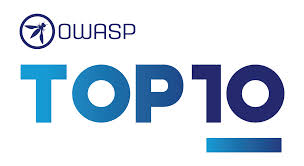What is OWASP Top 10: History, Importance, and Detailed Analysis
 Nipun Hegde
Nipun Hegde
Introduction
In the ever-evolving landscape of web security, the OWASP (Open Web Application Security Project) Top 10 has become an essential resource for developers and security professionals. This list identifies the most critical security risks to web applications and provides strategies for mitigating these risks. In this blog, we’ll explore the history of the OWASP Top 10, why it was implemented, and a detailed analysis of each vulnerability.
History of OWASP
The OWASP Foundation was established in 2001 with the goal of improving the security of software. It is a non-profit organization focused on enhancing software security through community-driven open-source projects, forums, and resources. The OWASP Top 10 project, one of its most recognized initiatives, was first introduced in 2003. It aimed to raise awareness about web application security by identifying the most common and severe vulnerabilities.
Why OWASP Top 10 Was Implemented
The OWASP Top 10 was implemented to:
Raise Awareness: By highlighting the most critical vulnerabilities, OWASP aims to educate developers, architects, managers, and organizations about the importance of web application security.
Standardize Security Practices: The list serves as a benchmark for organizations to evaluate their security posture and implement best practices.
Guide Development: It provides developers with actionable insights and techniques to prevent security flaws in their applications.
Compliance and Regulation: Many industries and regulatory bodies reference the OWASP Top 10 to ensure compliance with security standards.
The OWASP Top 10 Vulnerabilities
1. Injection
Overview: Injection flaws occur when untrusted data is sent to an interpreter as part of a command or query. SQL, NoSQL, OS, and LDAP injections are common examples.
Impact: Attackers can manipulate queries to access unauthorized data or execute arbitrary commands, leading to data breaches and system compromises.
Mitigation: Use prepared statements, parameterized queries, and ORM frameworks to prevent injection attacks.
2. Broken Authentication
Overview: Flaws in authentication mechanisms can allow attackers to compromise passwords, keys, or session tokens.
Impact: This can lead to unauthorized access, impersonation, and loss of sensitive information.
Mitigation: Implement multi-factor authentication, secure password storage, and ensure proper session management.
3. Sensitive Data Exposure
Overview: Applications often fail to properly protect sensitive data such as financial, healthcare, and personal information.
Impact: Attackers can steal or modify sensitive data if it is not encrypted or secured properly.
Mitigation: Encrypt data at rest and in transit, use secure protocols like HTTPS, and avoid storing sensitive data unnecessarily.
4. XML External Entities (XXE)
Overview: Vulnerabilities in XML processors can allow attackers to upload hostile content or exploit external entities.
Impact: This can lead to data exfiltration, DoS attacks, or internal network scans.
Mitigation: Disable XML external entity processing and use less complex data formats like JSON when possible.
5. Broken Access Control
Overview: Improperly enforced restrictions on what authenticated users are allowed to do.
Impact: Attackers can access unauthorized functions or data, leading to privilege escalation and data breaches.
Mitigation: Implement role-based access control (RBAC) and ensure proper validation of access controls.
6. Security Misconfiguration
Overview: Security settings should be defined, implemented, and maintained, but are often left insecure.
Impact: This can expose applications to various attacks due to unpatched flaws or default configurations.
Mitigation: Regularly update and patch systems, remove unused features, and review configurations for security compliance.
7. Cross-Site Scripting (XSS)
Overview: XSS occurs when an application includes untrusted data in a web page without proper validation or escaping.
Impact: Attackers can execute scripts in the victim’s browser, leading to session hijacking, defacement, or redirecting users to malicious sites.
Mitigation: Validate and sanitize input, use context-sensitive escaping, and implement a content security policy (CSP).
8. Insecure Deserialization
Overview: Insecure deserialization can lead to remote code execution, replay attacks, injection, and privilege escalation.
Impact: Attackers can exploit deserialization flaws to execute arbitrary code or elevate their privileges.
Mitigation: Avoid using native serialization formats, validate the integrity of serialized data, and use libraries that support secure deserialization.
9. Using Components with Known Vulnerabilities
Overview: Applications often use third-party libraries and frameworks with known vulnerabilities.
Impact: Attackers can exploit these vulnerabilities to gain control over the application, data, or underlying servers.
Mitigation: Regularly update dependencies, monitor vulnerability databases, and use tools like OWASP Dependency-Check to identify vulnerable components.
10. Insufficient Logging & Monitoring
Overview: Lack of logging and monitoring can delay the detection of security breaches.
Impact: Attackers can operate undetected for extended periods, increasing the damage and impact of breaches.
Mitigation: Implement comprehensive logging, use monitoring tools, and establish an incident response plan.
OWASP Top 10 Updates and Evolution
The OWASP Top 10 is regularly updated to reflect the changing landscape of web security threats. These updates are based on extensive data from various sources, including security vendors, consultancies, and OWASP’s own research. The evolution of the list ensures that it remains relevant and continues to address the most pressing security concerns.
OWASP Beyond the Top 10
While the OWASP Top 10 is a crucial starting point, OWASP offers many other projects and resources to enhance web security. Some notable ones include:
OWASP ASVS (Application Security Verification Standard): Provides a comprehensive checklist of application security requirements.
OWASP SAMM (Software Assurance Maturity Model): Helps organizations formulate and implement a strategy for software security that is tailored to their specific risks.
OWASP ZAP (Zed Attack Proxy): An open-source tool for finding vulnerabilities in web applications.
Importance of OWASP Top 10
The OWASP Top 10 is critical for several reasons:
Educational Resource: It serves as an educational tool for developers and security professionals to understand and mitigate common vulnerabilities.
Development Guidance: It provides actionable recommendations for secure coding practices and architecture decisions.
Risk Management: Organizations can prioritize security efforts based on the OWASP Top 10, ensuring the most critical issues are addressed first.
Compliance: Adhering to the OWASP Top 10 can help organizations meet regulatory requirements and industry standards for security.
Conclusion
The OWASP Top 10 plays a vital role in improving web application security by raising awareness, providing guidance, and setting industry standards. By understanding these vulnerabilities and implementing recommended practices, developers and organizations can significantly reduce the risk of security breaches and ensure the safety of their applications and data. Regular updates to the OWASP Top 10 ensure that it remains relevant in addressing the evolving threat landscape, making it an indispensable resource for anyone involved in web development and security.
Additional Resources
OWASP Official Website: https://owasp.org
OWASP Top 10 Project: https://owasp.org/www-project-top-ten/
OWASP Cheat Sheet Series: https://cheatsheetseries.owasp.org/
By leveraging these resources and integrating OWASP best practices into your development process, you can build more secure applications and contribute to a safer internet.
Subscribe to my newsletter
Read articles from Nipun Hegde directly inside your inbox. Subscribe to the newsletter, and don't miss out.
Written by

Nipun Hegde
Nipun Hegde
I'm a passionate software engineer always eager to learn and explore new technologies. Beyond coding, I'm deeply interested in DevOps and finance, constantly keeping up with the latest trends and innovations.I also enjoy sharing my knowledge through technical blogs, writing about the exciting things I learn.